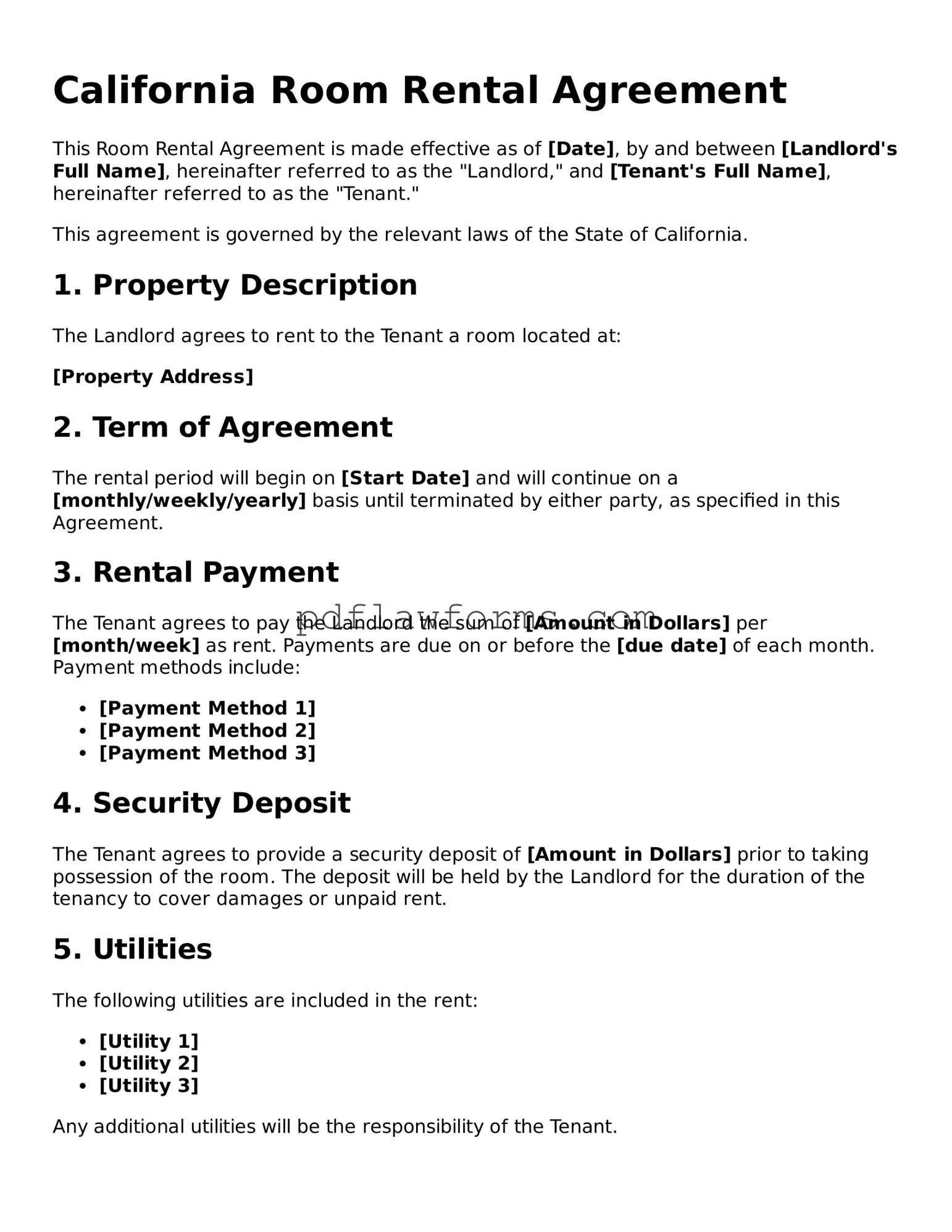Room Rental Agreement Form for the State of California
The California Room Rental Agreement form serves as a legal document outlining the terms and conditions between a landlord and a tenant for renting a residential space. This agreement details the rights and responsibilities of both parties, ensuring clarity and protection throughout the rental period. To begin the process, consider filling out the form by clicking the button below.
Make My Document Online
